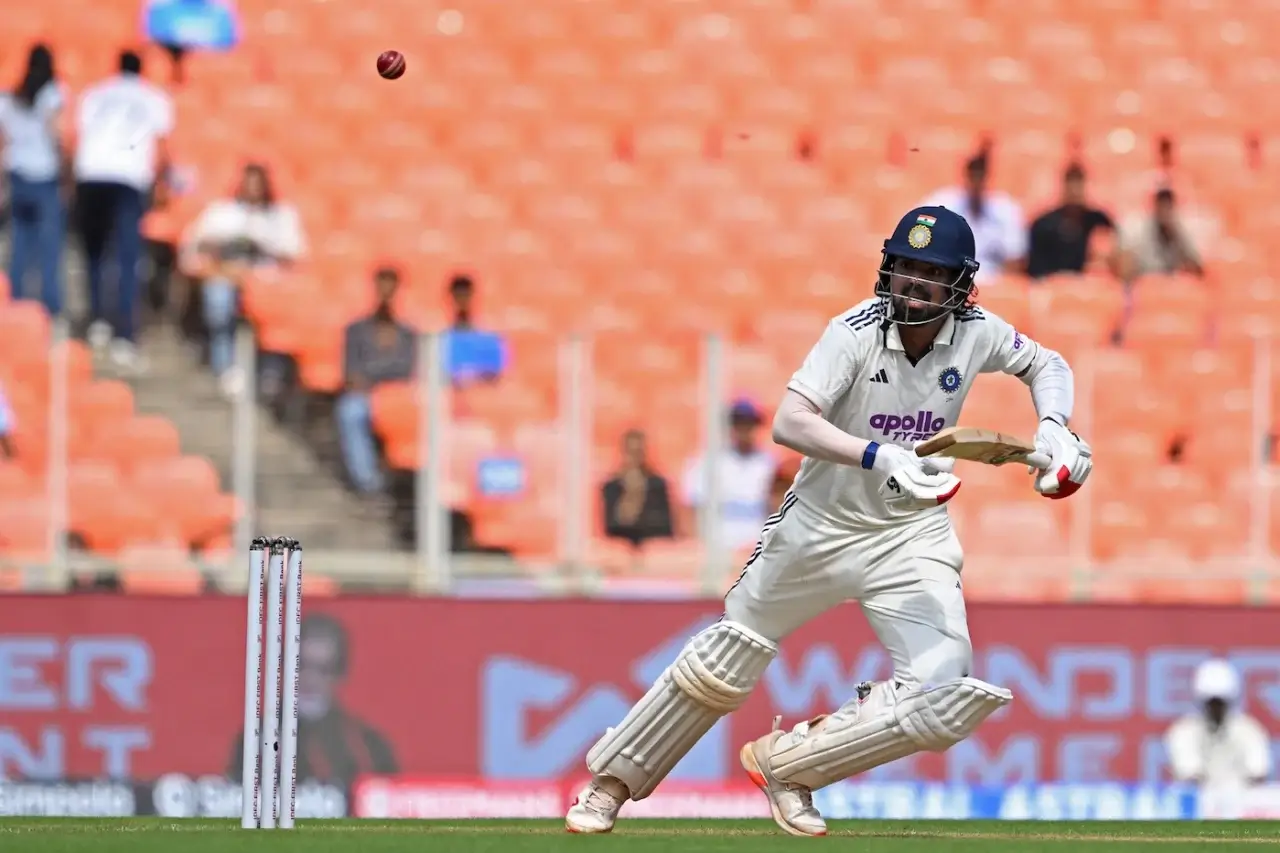India’s World Test Championship journey began with dominance in Ahmedabad. The bowlers, led by Mohammed Siraj, bundled out West Indies for only 162. His use of wobble seam created constant doubt and forced repeated errors. Jasprit Bumrah added venom with yorkers, while Kuldeep Yadav returned with drift and turn. Together, the attack ensured India controlled the opening exchanges.
The highlight was Siraj’s dismissal of Roston Chase. The ball swung in, then straightened late to find the edge. It symbolized India’s growing mastery in bowling variations. Chanderpaul fell early, King misjudged a straight ball, and Athanaze edged recklessly. West Indies collapsed without a solid partnership. Shai Hope’s dismissal to Kuldeep further broke their resistance.
This opening day confirmed India’s intent in the new WTC cycle. Early points matter in such a competitive structure, and India began perfectly. For context on how past rivalries shaped Test fortunes, explore the India vs Bangladesh timeline.
India’s reply was anchored by KL Rahul, who struck a composed half-century. His patience and control steadied the innings in absence of big names. Gill supported him as India reached 121 for 2 by stumps. The hosts trailed by just 41 runs with momentum in hand.
This win in the opening day not only gave India confidence but also important WTC points. In a cycle where every match matters, early dominance could prove decisive. West Indies meanwhile were left searching for answers in both batting and strategy.
Siraj’s Spell Defines India’s WTC Intent
Mohammed Siraj was the undisputed star on day one in Ahmedabad. His figures of 4 for 40 reflected control, aggression, and smart thinking. He pitched full, targeted stumps, and forced errors from inexperienced batters. His deliveries to Brandon King and Alick Athanaze showed planning and execution. King left a ball that crashed into middle stump, Athanaze chased a fuller delivery and edged.
The standout, however, was the Roston Chase wicket. Siraj’s wobble seam ball appeared to angle in before straightening sharply. Chase, expecting inward movement, closed his bat face early. The ball straightened just enough to find the leading edge. This dismissal summed up Siraj’s growing maturity as a strike bowler.
West Indies struggled to counter his lengths, often trapped between front-foot defense and loose drives. Siraj’s discipline meant they had no easy singles or release shots. His aggression also lifted teammates, with Bumrah offering sharp support. Though he missed a five-for at home, Siraj proved why he is India’s spearhead in this World Test Championship.
The Wobble Seam: India’s Tactical Weapon
The wobble seam has become central to Siraj’s arsenal in Tests. By releasing on a scrambled seam, he creates unpredictability off the pitch. Against right-handers it usually nips in, against left-handers it often moves away. Yet sometimes, as seen with Roston Chase wicket, it holds its line.
This uncertainty forced batters into mistakes throughout the innings. Siraj admitted later that results are not always in his control. Yet his persistence and accuracy ensured constant rewards. His comments highlighted his belief that wickets come only with hard work.
As the WTC progresses, India’s ability to exploit this variation will be vital. Conditions in Ahmedabad suited his style, and similar surfaces in Asia will amplify it. Opponents must prepare specifically for this ball, or risk repeated collapses.
West Indies Collapse Hurts Their WTC Chances
The West Indies batting collapse not only handed India control but hurt their WTC hopes. Bowled out for 162 inside two sessions, their flaws were exposed. Chanderpaul returned after months only to edge down leg for a duck. King’s leave against a straight ball was a glaring error. Athanaze, despite promise, drove loosely outside off to Siraj.
Shai Hope offered brief resistance but fell to Kuldeep’s drift and turn. Roston Chase’s dismissal to the wobble seam variation symbolized tactical failure. Beyond these moments, there was little fight from the lower order. Bumrah exploited Greaves’ backlift with a yorker, completing the collapse.
Their innings lasted just 54 overs, showing lack of patience and adaptability. In WTC cricket, such batting displays can cost crucial points. With stronger teams ahead, West Indies must learn quickly. Their approach lacked composure, and partnerships never materialized. Unless changes are made, their WTC campaign could slip away early.
Key Errors That Cost West Indies
West Indies’ top order committed repeated errors in decision-making. Chanderpaul played without footwork on return to Test cricket. King’s judgment failure cost him his wicket cheaply. Athanaze showed eagerness but lacked restraint when set. Hope looked solid but misread Kuldeep’s dip and drift.
Shot selection under pressure proved poor, while defensive techniques collapsed under wobble seam pressure. Without partnerships, they offered India constant opportunities. Addressing these mistakes is vital if they hope to stay alive in this WTC cycle.
Rahul Anchors India’s Response with Calm Half-Century
While bowlers set the stage, KL Rahul gave India batting stability. His unbeaten 53 showcased control, patience, and experience. He left balls outside off, punished loose deliveries, and rotated strike well. In absence of Virat Kohli and Rohit Sharma, his role became crucial.
Sai Sudharsan’s dismissal for seven exposed India’s transition phase. Yet Rahul’s presence ensured no collapse followed. Shubman Gill supported with resilience, adding runs without unnecessary risks. Together they brought India to 121 for 2 by stumps. India trailed by 41 but had full control.
Rahul’s maturity reflected India’s adaptability in this World Test Championship. His leadership at No. 3 showed responsibility and class. For a side rebuilding, such innings inspire stability and belief. His form will be vital as India chase crucial WTC points at home.
Rahul’s Contrast with West Indies’ Approach
Rahul’s innings highlighted the gulf in application between both sides. Where West Indies chased deliveries recklessly, Rahul left patiently. His footwork against seam was crisp, ensuring minimal chances. He built his innings step by step, avoiding risky strokes.
The difference underlined India’s discipline compared to West Indies’ impatience. Rahul valued his wicket, while West Indies gifted theirs away. This approach gave India control in the Ahmedabad Test and a WTC advantage.
Conclusion
Day one of the Ahmedabad Test proved decisive for India’s WTC start. Mohammed Siraj led the attack with brilliance, dismantling West Indies’ fragile order. His wobble seam variation delivered magic and highlighted India’s tactical depth. Bumrah reached a home milestone, and Kuldeep returned with vital breakthroughs. Together, India’s bowlers showed why they remain a dominant Test unit.
With bat, KL Rahul anchored the innings with composure. His unbeaten half-century steadied a side missing senior players. Gill’s support kept momentum intact as India closed strongly. The lead may still exist, but the advantage is firmly India’s.
For West Indies, the collapse hurt both morale and WTC chances. Poor shot selection and lack of patience proved costly. Without quick improvement, their campaign risks drifting out of contention. Their bowlers must now create miracles to revive hopes.
As the series unfolds, India’s blend of youth and experience will be tested. Siraj’s brilliance and Rahul’s calm already set the tone. The road to the final is long, but India have taken the right first step.
















